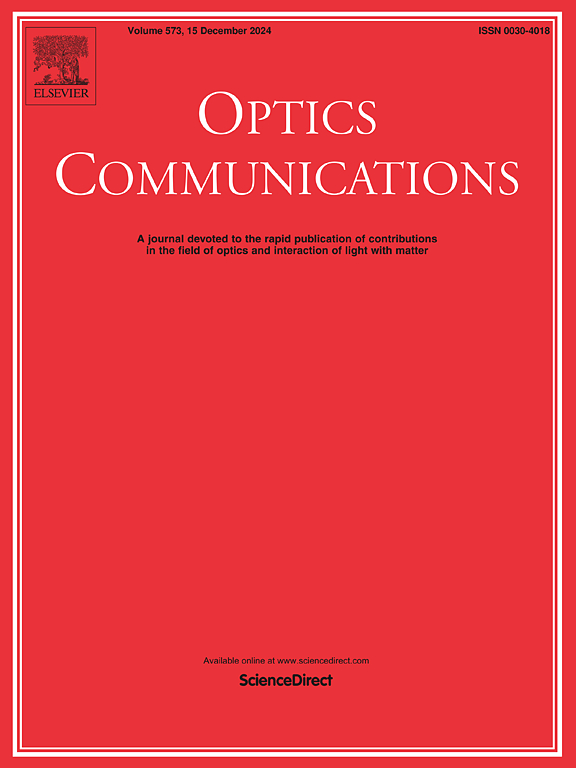基于z -切割和x -切割铌酸锂的等离子体微盘定向发射特性
IF 2.5
3区 物理与天体物理
Q2 OPTICS
引用次数: 0
摘要
本研究在m=20的特定TE模式下,研究了基于Z-cut和X-cut铌酸锂(LN)的等离子体微盘的特性,如品质因子Q、谐振频率f、方向性D等,研究发现单轴晶体的折射率分布是操纵发射特性的额外维度。经数值计算,φ=0°(折射率椭圆主轴相对于x轴的旋转角)的x切微盘不仅具有良好的单向性,而且Q值比z切微盘高,当变形因子ε=0.33时,为片上光源提供了理想的平台。然后利用线性变换下的微扰理论计算f,同时结合poincar本文章由计算机程序翻译,如有差异,请以英文原文为准。
Directional emission properties of limaçon microdisk based on Z-cut and X-cut lithium niobate
In this study, the characteristics of limaçon microdisk based on Z-cut and X-cut Lithium Niobate (LN) is examined under a specific TE mode of , such as quality factor , resonant frequency , directionality , etc., and research finds that refractive index distribution of uniaxial crystal serves as an additional dimension to manipulate emission properties. X-cut microdisk with (the angle of rotation of the principal axis of the refractive index ellipse relative to x-axis) not only exhibits good unidirectionality, but also has higher than Z-cut microdisk through numerical calculations, which provides an ideal platform for on-chip light source, when the deformation factor . Then perturbation theory under linear transformation is utilized to calculate , simultaneously combined with Poincaré Surface of Section (PSOS) and Husimi function to reveal the difference of and between Z-cut and X-cut microdisks. The research results indicate that the original virtual (OV) space approximation perturbation can accurately calculate the resonant frequency for the X-cut Limacon microdisk, while PSOS and Husimi function in reciprocal virtual (RV) space demonstrate that X-cut microdisk's photons have a higher probability distribution on a more stable orbit than Z-cut microdisk in phase space after , resulting in higher in X-cut microdisk.
求助全文
通过发布文献求助,成功后即可免费获取论文全文。
去求助
来源期刊

Optics Communications
物理-光学
CiteScore
5.10
自引率
8.30%
发文量
681
审稿时长
38 days
期刊介绍:
Optics Communications invites original and timely contributions containing new results in various fields of optics and photonics. The journal considers theoretical and experimental research in areas ranging from the fundamental properties of light to technological applications. Topics covered include classical and quantum optics, optical physics and light-matter interactions, lasers, imaging, guided-wave optics and optical information processing. Manuscripts should offer clear evidence of novelty and significance. Papers concentrating on mathematical and computational issues, with limited connection to optics, are not suitable for publication in the Journal. Similarly, small technical advances, or papers concerned only with engineering applications or issues of materials science fall outside the journal scope.
 求助内容:
求助内容: 应助结果提醒方式:
应助结果提醒方式:


